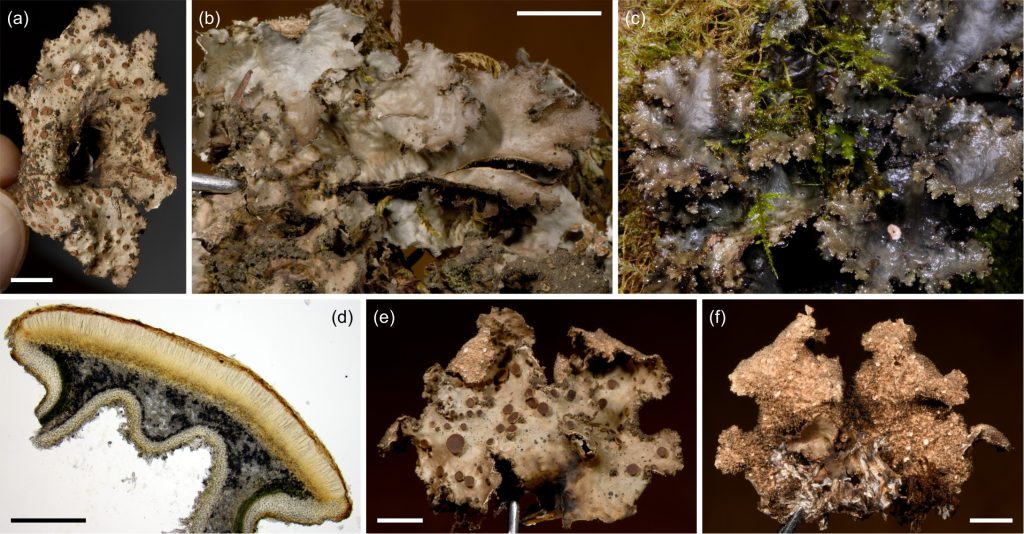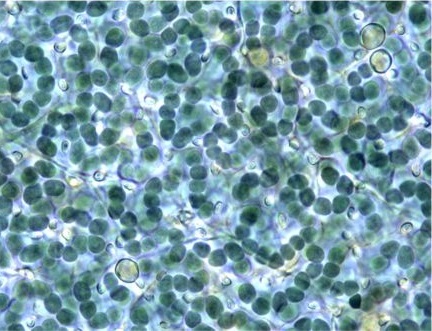Sticta is a genus of lichenized fungi characterized by well-differentiated pores (cyphellae) on the lower surface and a peculiar fishy smell of wet thalli. Sticta is especially speciose on Neotropical mountains, and high diversity and endemism have also been discovered from tropical islands. A recent survey of Sticta in East African montane habitats in Kenya and Tanzania detected 14 species, of which only four were previously known from the region. The study confirmed the presence of the previously reported S. fuliginosa, S. sublimbata, S. tomentosa, and S. umbilicariiformis and recorded S. andina, S. ciliata, S. duplolimbata, S. fuliginoides, and S. marginalis first time from Kenya and/or Tanzania. Five species, S. afromontana, S. aspratilis, S. cellulosa, S. cyanocaperata, and S. munda, were described as new to science. Of the new species, S. afromontana is one of the most common Sticta species in the studied afromontane habitats, and also Sticta aspratilis is widely distributed in habitats ranging from lower montane to subalpine zone. Sticta cellulosa, S. cyanocaperata, and S. munda, on the other hand, have so far only been found from Mt. Kilimanjaro, Tanzania . Further, several specimens were collected that did not belong to any of the species listed above but probably belong to at least five additional Sticta species. On the other hand, several species previously reported from the region, including S. ambavillaria, S. cyphellulata, S. kunthii, S. limbata, S. orbicularis, S. variabilis, S. weigelii, and S. xanthotropa, were not detected and most probably are not present in the region.
Kaasalainen U, Kirika PM, Mollel NP, Hemp A, Rikkinen J. 2023. The lichen genus Sticta (Lobariaceae, Peltigerales) in East African montane ecosystems. Journal of Fungi 9: 246, doi.org/10.3390/jof9020246.

Keywords: Eastern Afromontane biodiversity hotspot, Mount Kilimanjaro, nuITS, Tanzania, Kenya, Lobariaceae, Peltigerales, Lecanoromycetes

